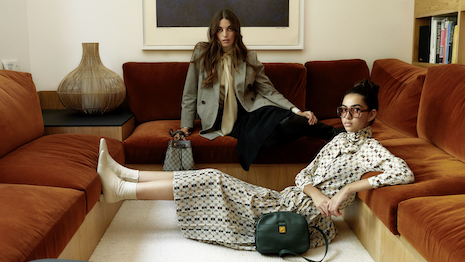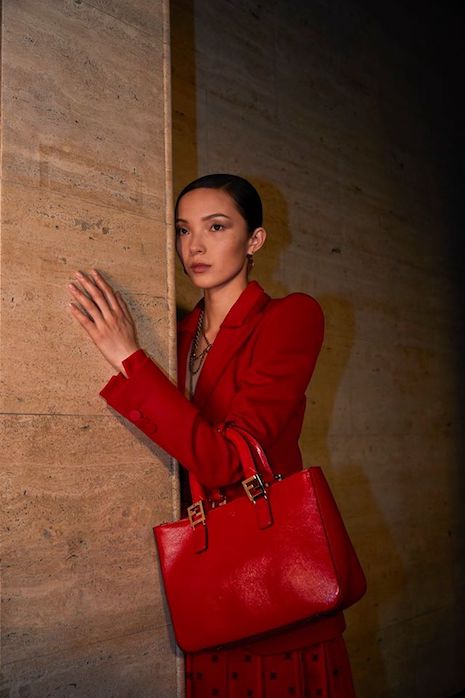 Vestiaire Collective AW19 campaign. Image credit: Vestiaire Collective
Vestiaire Collective AW19 campaign. Image credit: Vestiaire Collective
NEW YORK – While China is fueling a significant portion of luxury growth, the millennial generation is poised to have a greater impact on the business’ expansion in the coming years.
During Luxury FirstLook 2020, a senior partner from Boston Consulting Group presented findings from the Global True Luxury Consumer Survey, which found that between 2018 and 2025, millennials will account for 130 percent of all luxury growth, whereas Chinese consumers will be responsible for 75 percent of the increase. The speaker noted that a number of the key trends that have put pressure on luxury players to change including casualization and customization are showing signs of stabilization, pointing to less dramatic shifts in the market for the near future.
"I would categorize this past year as more of an evolution than a revolution in true luxury," said Christine Barton, managing director and senior partner at Boston Consulting Group.
"I do think that will change as more of the Gen Z enter the markets," she said. "But I expect the next few years, outside of an exogenous event – either social, political or recessionary – to be more of the same as well next year."
Luxury FirstLook 2020 was produced by Luxury Daily, with venue sponsor UBS
True-luxury buyers
Between 2018 and 2025, the luxury market excluding categories such as automotive, yachts and jets, is projected to grow at a compound annual growth rate of 4.6 percent. Personal luxury goods growth during that time will be at 3 percent, while experiential purchases are expected to rise at a CAGR of 5.4 percent.
While experiential purchases have been climbing in recent years, Ms. Barton noted that growth in this category is now slowing, while there is going to be increased growth in personal luxury goods such as fashion. The researcher partly attributes this to pent-up demand after consumers pulled back on material goods purchases.
By 2025, millennials will represent half of all spending in the personal luxury goods category. Gen Zers will triple the amount they spend on luxury, but will still only represent about an 8 percent share of the total sales.
Gen Z is expected to more closely resemble the Gen Xers, with a focus on buying into quality and status that will be a boon to luxury brands. The rise of this generation will bring about more changes for how luxury should operate, but this wave will be hitting further into the future.
Aside from millennials, China is also seeing significant growth, and it will account for 40 percent of total personal luxury goods sales by 2025.
 Chinese consumers will be 40 percent of the luxury market in 2025. Image credit: Fendi
Among luxury buyers, there is a cohort that BCG refers to as true-luxury consumers, or those who spend at least 5,000 euros per year on luxury. While these 18.5 million individuals are only 4 percent of the total population that buys luxury, they account for 30 percent of all luxury sales.
In some cases, a luxury brand may find that 0.1 percent of its customers are driving about 20 percent of its business. Compared to the aspirational individual who might buy a handbag once a year, the top true-luxury customers are likely to shop more frequently.
Ms. Barton noted the importance of customer acquisition in this segment, since 90 percent of all true-luxury growth between 2018 and 2025 will come from new clients.
Even though true-luxury consumers have the capacity to spend big on luxury goods, they still tend to mix and match between luxury labels and lower priced fashion.
This high-low aesthetic is reflected in true-luxury buyers’ interest in special editions or collaborations. Half of these shoppers say they have made a purchase from one of these limited time lines, with the trend driven predominantly by younger generations.
Chinese consumers will be 40 percent of the luxury market in 2025. Image credit: Fendi
Among luxury buyers, there is a cohort that BCG refers to as true-luxury consumers, or those who spend at least 5,000 euros per year on luxury. While these 18.5 million individuals are only 4 percent of the total population that buys luxury, they account for 30 percent of all luxury sales.
In some cases, a luxury brand may find that 0.1 percent of its customers are driving about 20 percent of its business. Compared to the aspirational individual who might buy a handbag once a year, the top true-luxury customers are likely to shop more frequently.
Ms. Barton noted the importance of customer acquisition in this segment, since 90 percent of all true-luxury growth between 2018 and 2025 will come from new clients.
Even though true-luxury consumers have the capacity to spend big on luxury goods, they still tend to mix and match between luxury labels and lower priced fashion.
This high-low aesthetic is reflected in true-luxury buyers’ interest in special editions or collaborations. Half of these shoppers say they have made a purchase from one of these limited time lines, with the trend driven predominantly by younger generations.
 Missoni's Adidas collaboration. Image credit: Missoni
Missoni's Adidas collaboration. Image credit: Missoni
